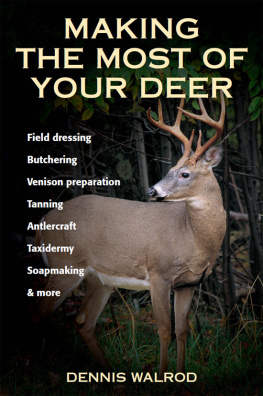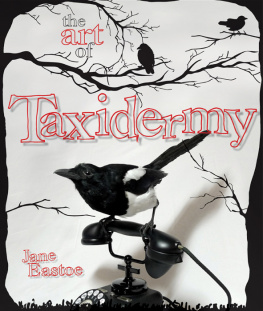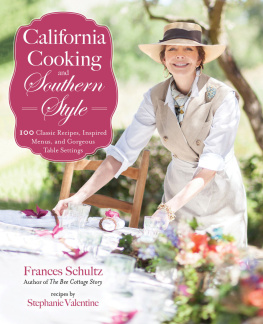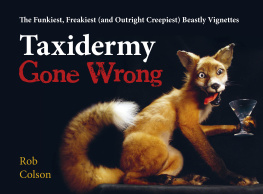GUIDE TO
TAXIDERMY

CHARLES K. REED
AND
CHESTER A. REED

DRAWINGS AND PHOTOGRAPHS OF MOUNTED SPECIMENS
BY THE AUTHORS AND MR. N. F. STONE

Publishers Note: This is a facsimile of Guide to Taxidermy, originally published in 1908. This book is intended as an artifactnot as a contemporary guide to taxidermy. The materials, instructions, and techniques described in these pages may not be safe or effective for modern use.
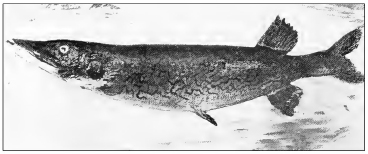
Copyright 2012 by Skyhorse Publishing, Inc.
All Rights Reserved. No part of this book may be reproduced in any manner without the express written consent of the publisher, except in the case of brief excerpts in critical reviews or articles. All inquiries should be addressed to Skyhorse Publishing, 307 West 36th Street, 11th Floor, New York, NY 10018.
Skyhorse Publishing books may be purchased in bulk at special discounts for sales promotion, corporate gifs, fund-raising, or educational purposes. Special editions can also be created to specifcations. For details, contact the Special Sales Department, Skyhorse Publishing, 307 West 36th Street, 11th Floor, New York, NY 10018 or .
Skyhorse and Skyhorse Publishing are registered trademarks of Skyhorse Publishing, Inc., a Delaware corporation.
Visit our website at www.skyhorsepublishing.com.
10 9 8 7 6 5 4 3 2 1
Library of Congress Cataloging-in-Publication Data is available on fle.
ISBN: 978-1-61608-539-1
Printed in China
PREFACE
The object of this book is to enable the reader to gain complete mastery of the art of taxidermy. We do not believe in the wanton destruction of birds for ornamental purposes, nor do the laws in most states, if properly enforced, allow of such practices. We do believe, however, that at least one person in every community should possess the knowledge to enable him to correctly mount specimens.
Millions of birds are killed yearly in the United States by accidents, such as flying against lighthouses, telegraph wires, or buildings, etc. Practically none of these are saved because there is no one at hand who has the requisite knowledge.
If only a fraction of one per cent, of all the birds killed accidentally, and those shot by sportsmen and thrown away, could be saved and correctly prepared it would be unnecessary to shoot thousands that are now killed every year simply for museum purposes.
We trust that this book may be the means of creating a taxidermist or an enthusiast in every section of the country, and that each one of them will endeavor to persuade sportsmen to save most of the game they kill. You will find that there is pleasure in doing the work for yourself and profit in doing that for others.
In the following pages we give you the results of our thirty-five years experience in all branches of taxidermy. No trade secrets are beld back; everything is laid bare. We have endeavored to omit nothing that would be a help to the student and to avoid the introduction of any hindrances.
We have illustrated every point as fully as possible, and are sure that any faithful reader and worker can in a short time do work equal to that of the best. The text, every drawing and every photograph used in this book is new and made expressly for this work. We wish to give credit to our chief taxidermist, Mr. N. F. Stone, who mounted a large number of the specimens that are pictured; while a young man, he is one of the best that this country has yet produced, a natural-born taxidermist.
We shall be more than pleased if, by our work, others can be produced.
CHAS. K. & C. A. REED.
Worcester, Massachusetts.
May, 1908.

Brown Thrasher
(On a natural twig for museum exhibition.)
TABLE OF CONTENTS

Myrtle Warblers
Sparrow Hawks
LIST OF ILLUSTRATIONS

Chickadee
Chestnut-collared Lockspur
Golden-fronted Woodpecker. Gilded Flicker
(Some well made skins)
IMPORTANT
Read These Pages Before Doing Any Work
In the following chapters we give the best methods of skinning and mounting the members of several classes of the animal kingdom.
Whatever you are to work on, read the Chapter appertaining to it through before doing any of the work. We ask you to do this because it may cause you to avoid some false move. We have made all instructions as plain as possible, and as nearly as possible in their natural sequence, but the different operations are so closely related to one another that you should know what is coming next before you commence work.
If your specimen is to be mounted, fix upon a certain position before you commence and have that position in mind throughout the work. The illustrations that we give are natural and artistic once for the different species and you will do well to select some of these for your first models.
Chapter 10 gives the materials and tools that are often used or needed by taxidermists, where to get them or how to make them. Of course a beginner will need but very few of these, but we have everything arranged in alphabetical order so you can find what you want or anything that may be mentioned in the text. It gives receipts for making solutions used by, or useful for, taxidermists.
Chapter 11 gives the sizes and colors of eyes for a great many birds and animals so you can, at least determine what size eye you wish for any specimen. It also has a plate illustrating the different sizes and styles of eyes. A list of the sizes of wire used for many different specimens will guide you as to what you should have on hand for your work. It also gives the prices that are charged by expert and reputable taxidermists for work of all kinds.

All taxidermists are not collectors, indeed, most of those who make a business of it, find little time to do any collecting at all. Yet any work on taxidermy would be far from complete did it not include remarks upon the subject of guns, ammunition and the care of specimens in the field.

For ordinary collecting in your home neighbor hood dress as inconspicuously as possible; wear your usual street clothes. Do not get a full suit of hunting togs to excite the idle curiosity of everyone you meet. Most of our collecting is done with a pocket gun and the specimens are brought home in the pocket.
Many of the birds a taxidermist mounts are those found dead or that have killed themselves accidentally. The collector, however, might hunt for ages without finding a dead bird. Most of his specimens have to be shot. Bird lime is absolutely of no use and even if it would catch a bird, the specimen would be in no condition to mount.
Next page

